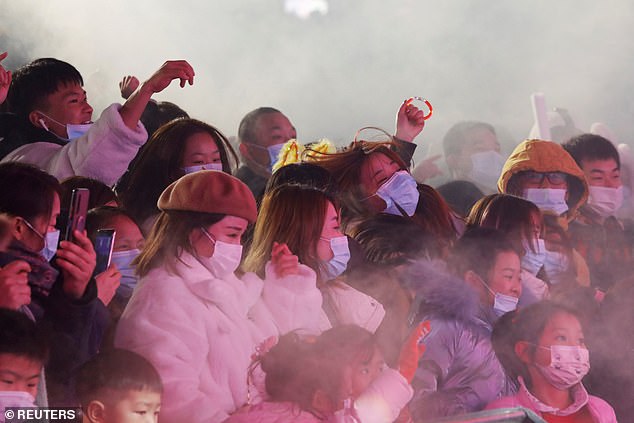Thousands gather for pop concert in Wuhan after it 'stamped out virus' with draconian lockdown
While millions around the world celebrated the New Year from the comfort of their own sofas in lockdown, thousands of revellers in Wuhan were partying together with no social distancing in sight.
In what is sure to spark envy in many countries still subject to strict measures, party-goers were seen crowding into a live music event in the former Covid epicentre.
Many opted to go mask-free inside the venue where people danced just inches from each other.
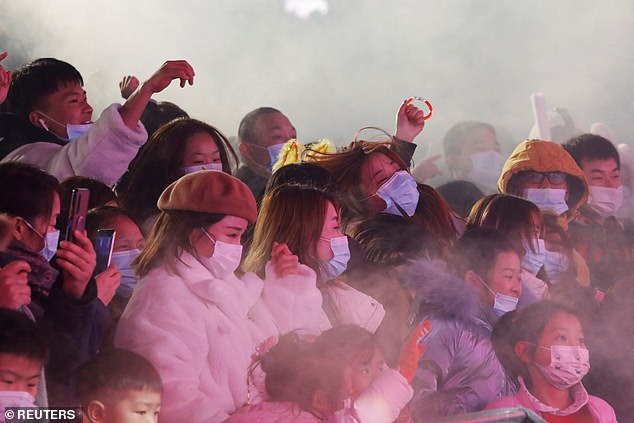
Thousands of revellers in Wuhan celebrated the New Year together with no social distancing in sight
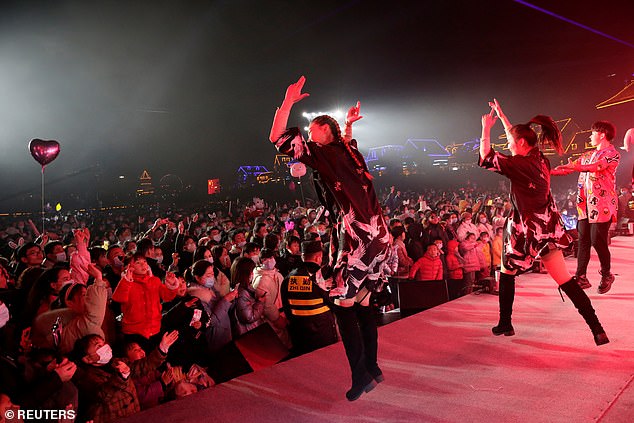
Party-goers were seen crowding into a live music event with dancers on stage in the former Covid epicentre
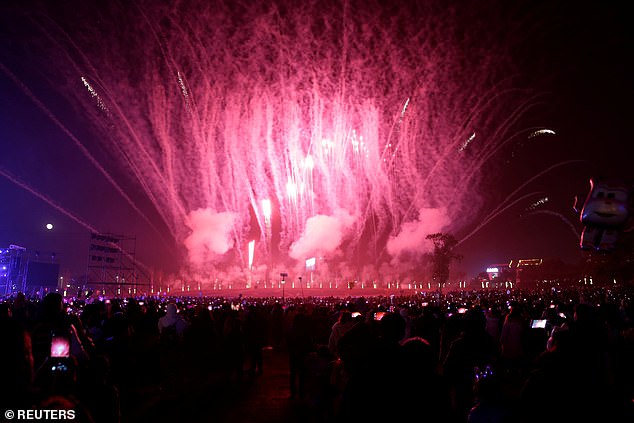
Many opted to go mask-free inside the venue where people danced just inches from each other
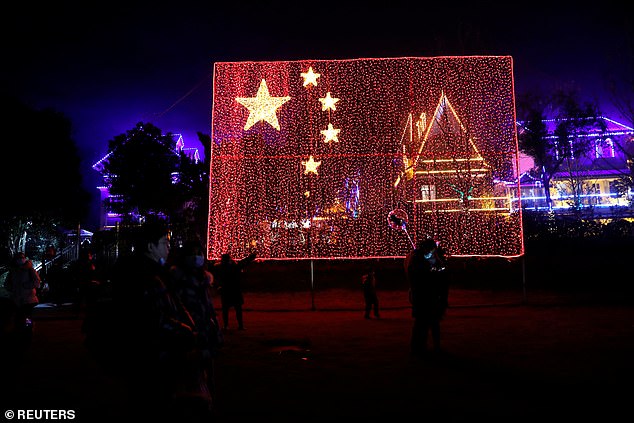
The festivities come 12 months after the virus was first discovered in the Chinese city
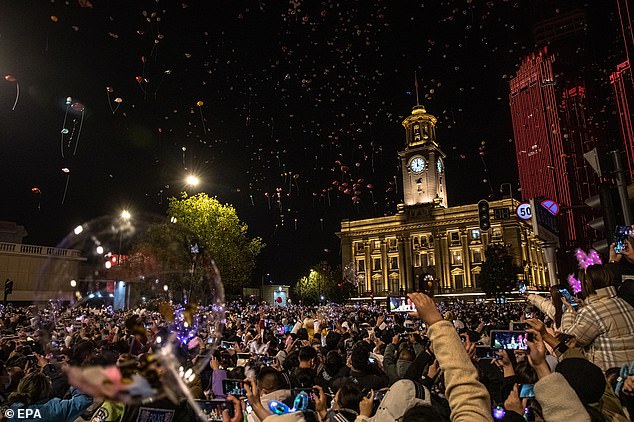
Balloons were released into the sky in an incredible display in Wuhan. Huge crowds gathered in the city which was the Covid-19 epicentre less than a year ago
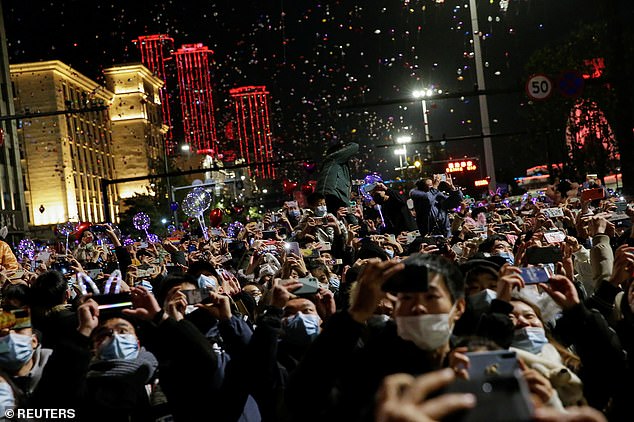
Amazed locals took photos of balloons being released into the sky to bring in 2021. The crowds weren’t socially distanced but many opted to wear face masks
As per tradition, hundreds gathered in front of the old Hankow Customs House building, one of the city’s more popular New Year’s Eve spots.
When the building’s old clock struck midnight balloons were released and people hugged and cheered in the joyous scenes.
The festivities come 12 months after the virus was first discovered in the Chinese city, sparking a deadly pandemic which has so far killed more than a million people across the world.
Wuhan has been largely virus free for months, and in recent days it has been vaccinating some specific groups of the local population.
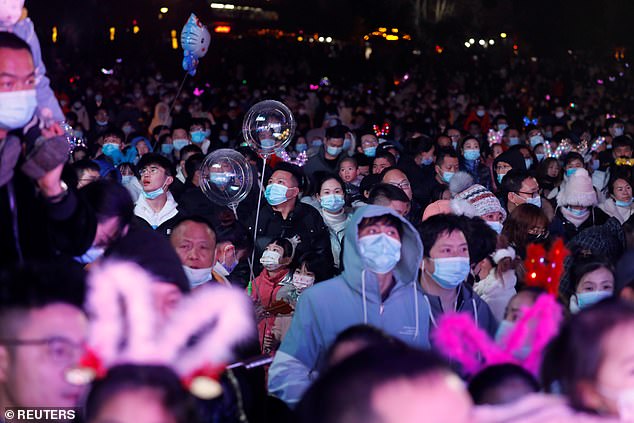
Hundred
s gathered in front of the old Hankow Customs House building, one of the city’s more popular New Year’s Eve spots
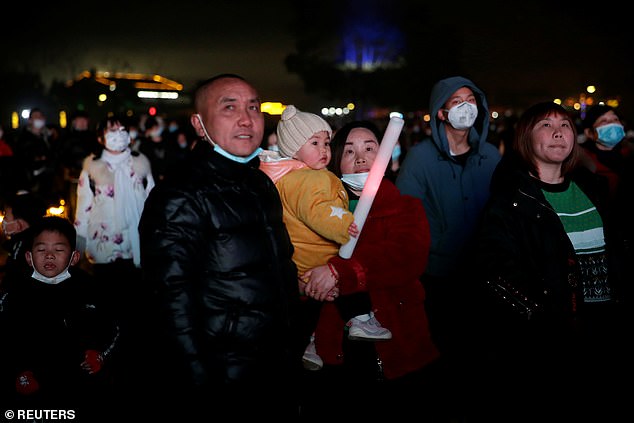
Wuhan has been largely virus free for months, and in recent days it has been vaccinating some specific groups of the local population
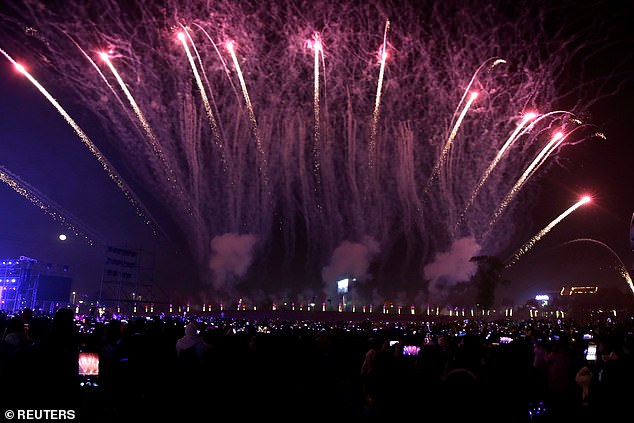
The city of 11 million was shut off from the rest of China in a surprise overnight lockdown beginning January 23
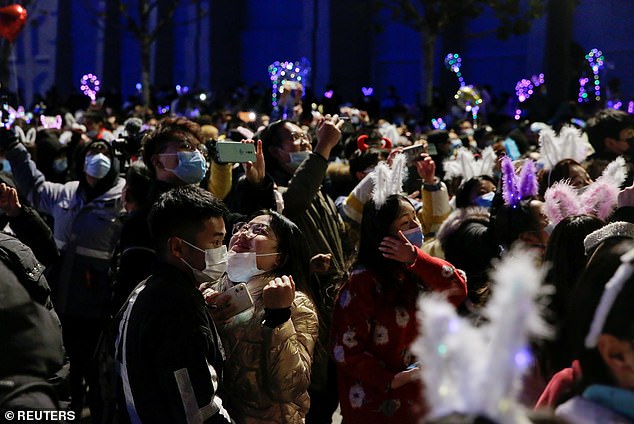
In what is sure to spark envy in many countries still subject to strict lockdown measures, party-goers were filmed crowding into a live music event in the former-Covid epicentre
The city hasn’t reported a new locally transmitted case of the disease since May 10, after undergoing one of the strictest lockdowns worldwide.
The city of 11 million was shut off from the rest of China in a surprise overnight lockdown beginning January 23, with road blocks erected and planes, trains and buses barred from entering the city. Almost 3,900 of China’s 4,634 recorded Covid-19 deaths occurred in the industrial city.
Wuhan’s lockdown only lasted 76 days, ending in early April when most of the world was in the darkest days of the pandemic.
Although China has been criticised for allegedly covering up the virus as it took hold at the end of 2019, it has also won plaudits for the way it has since managed the pandemic.
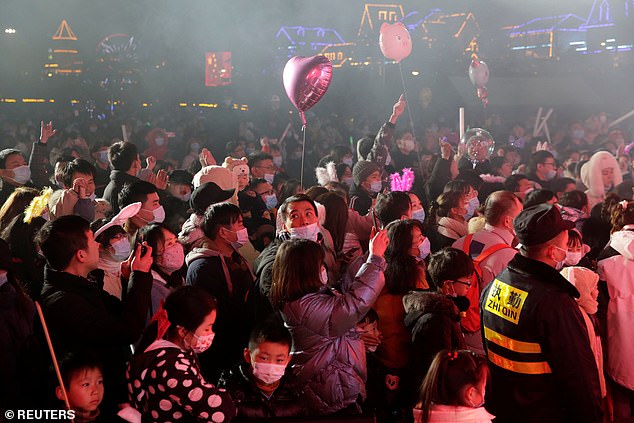
The city hasn’t reported a new locally transmitted case of the disease since May 10, after undergoing one of the strictest lockdowns worldwide
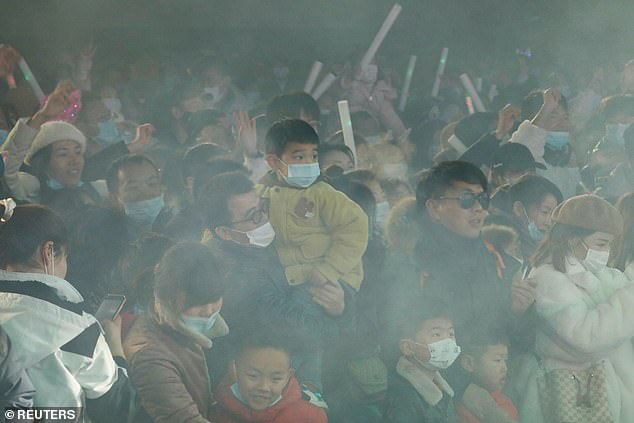
Wuhan’s lockdown only lasted 76 days, ending in early April when most of the world was in the darkest days of the pandemic
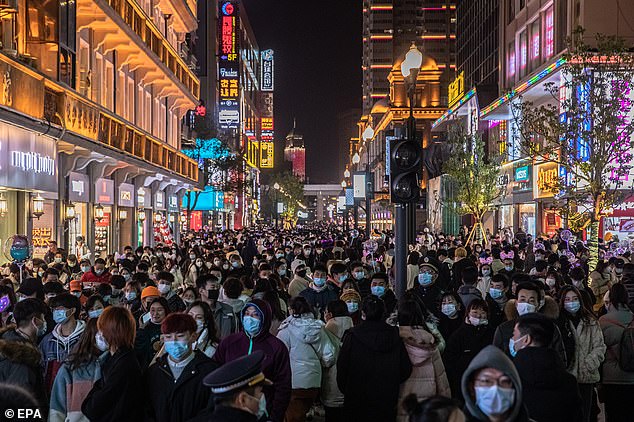
People with and without protective masks on their faces walk in a street on New Year’s Eve
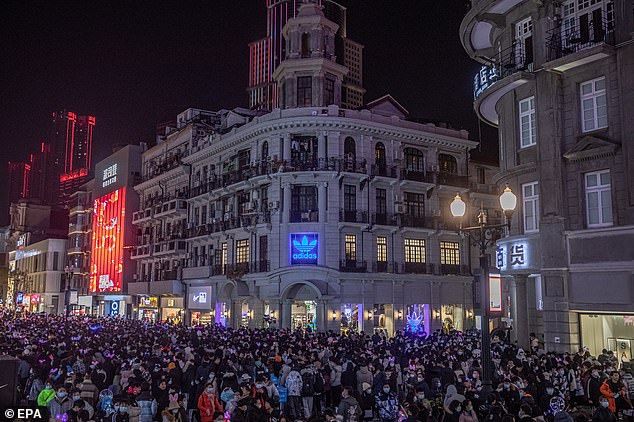
Life in Wuhan, a Chinese
city of more than 11 million, which nearly a year ago became the epicenter of the coronavirus outbreak is returning to normal
The country was well placed to tackle a disease, with a centralised epidemic response system on the back of the SARS outbreak in 2002.
It implemented a very harsh lockdown, with Wuhan residents forced to stay at home from January and all non-essential shops closed for months.
The state also used facial recognition and CCTV cameras to identify people leaving home, and even used loudspeakers to shout at people who were disobeying the rules.
Another crucial factor was that only three per cent of elderly people in China live in care homes.
The facilities have been a hotbed for the virus in many countries across the world, but ageing parents normally living with their families in China, meaning less transmission between vulnerable people.
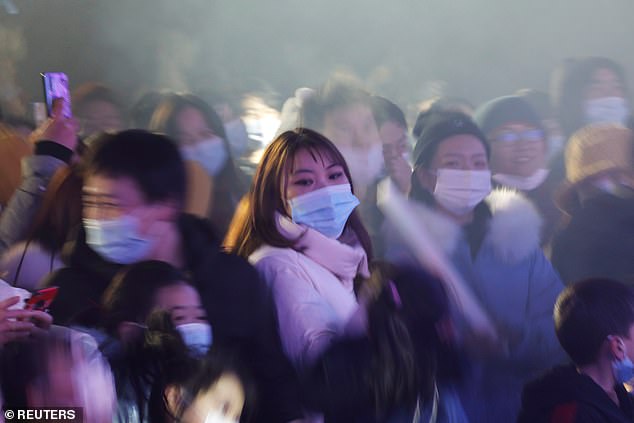
Although China has been criticised for allegedly covering up the virus as it took hold at the end of 2019, it has also won plaudits for the way it has since managed the pandemic
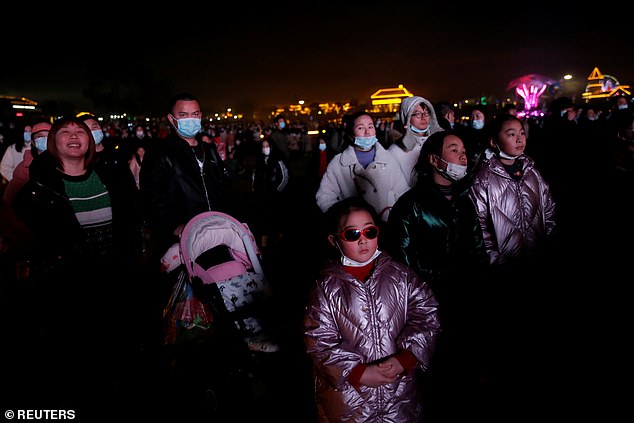
China implemented a very harsh lockdown, with Wuhan residents forced to stay at home from January and all non-essential shops closed for months
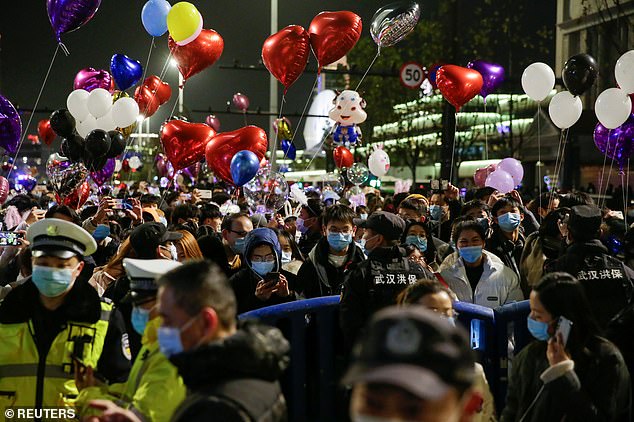
Partygoers, mostly wearing protective face masks, gathered in the streets of Wuhan to welcome 2021
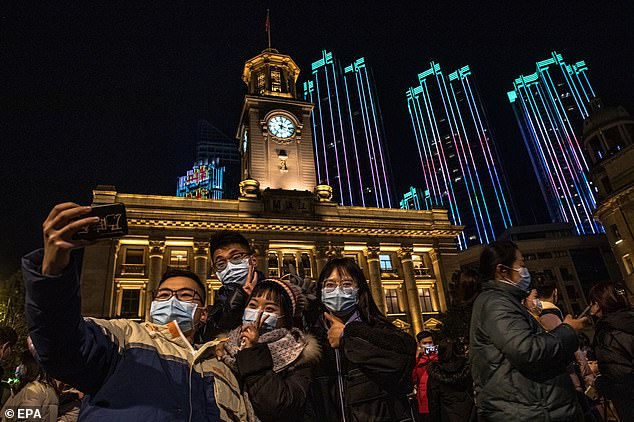
Revellers posed for a selfie in front of buildings lit up in bright colours. Wuhan had a more-normal New Year’s Eve than many others across the globe
China was quick to enforce its draconian measures, imposing a lockdown which suspended all public transport in Wuhan, setting up 14,000 health checkpoints at transport stations across the country, closing schools and minimising movement.
The government also put up physical barricades to enclose the epicentre of the virus in Wuhan.
Its track and trace system was also set up within weeks, with the government claiming that the entire population of 11million people in Wuhan were tested by May. This was in part achieved by the government warning of possible detention for those who refused to be tested.
Mass testing has been heralded as the key to controlling the virus, but many countries have struggled to replicate China’s success.
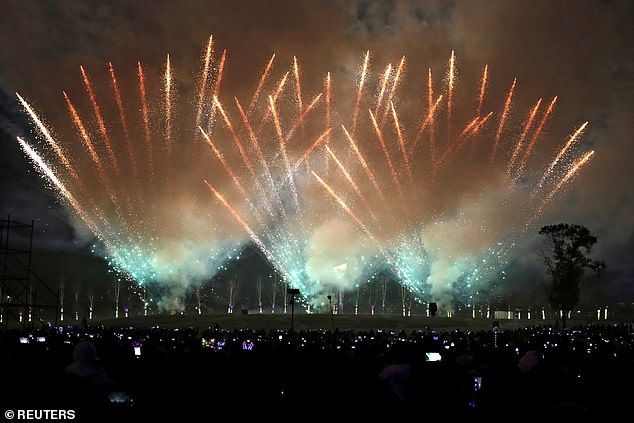
A fireworks display delighted the huge crowds gathered in the former virus hotspot to see in the New Year
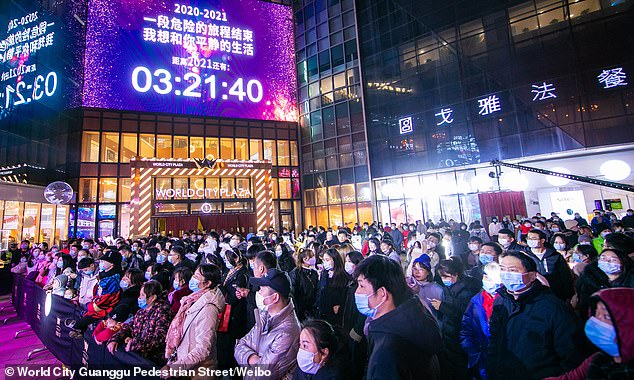
Vast crowds were seen gathered on the streets of Wuhan as a new year countdown ushers in 2021
The country also implemented a traffic light-s
tyle health code in February, with a green code allowing someone to travel freely, and orange or red indicating someone has to quarantine for up to two weeks.
The QR based system uses location tracking to show if a user has been near a confirmed case of the coronavirus.
Also key to the country’s response was its ability to deliver PPE to healthcare workers, being the world’s largest manufacturer of the equipment.
The fact that Chinese people are more accustomed to wearing face masks also eased the introduction of the new laws, whereas many in the West remain averse to the measures which they deem an infringement of civil liberties.
In February, Wuhan opened 16 new hospitals in public venues where people who had only experienced mild symptoms were ordered to self-isolate.
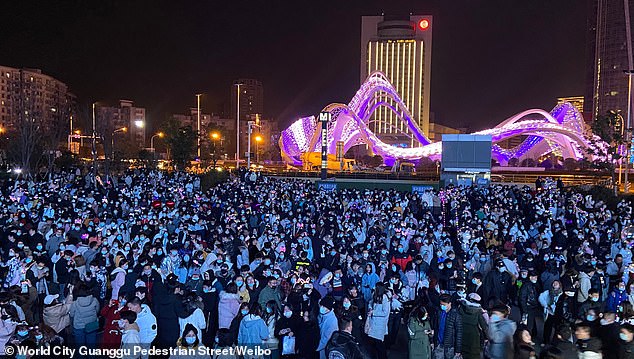
Huge crowds were seen on the streets of Wuhan on New Year’s Eve. Once the virus epicentre, lockdown rules have since been significantly relaxed in the city

Mass testing has been heralded as the key to controlling the virus, but many countries have struggled to replicate China’s success
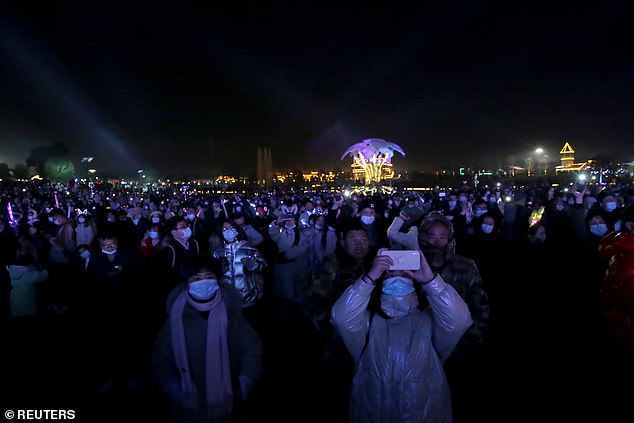
In Wuhan, where the virus first surfaced at the very end of 2019 before spiralling catastrophically around the globe, revellers partied to welcome the new year in
If they started showing more serious symptoms, they were then moved to established hospitals.
These measures helped guarantee the isolation of those suffering from the virus, whereas other countries have relied on their citizens to isolate at home.
China also closed off its borders and tested and quarantined the few who did enter the country or moved between its states from early on in the pandemic, another measure which wasn’t adopted until much later by other countries.
Gregory Poland, director of the Vaccine Research Group at the Mayo Clinic, told The Lancet: ‘In China, you have a combination of a population that takes respiratory infections seriously and is willing to adopt non-pharmaceutical interventions, with a government that can put bigger constraints on individual freedoms than would be considered acceptable in most Western countries.
‘China does not have the kind of raucous anti-vaccine, anti-science movement that is trying to derail the fight against Covid-19 in the USA.’

